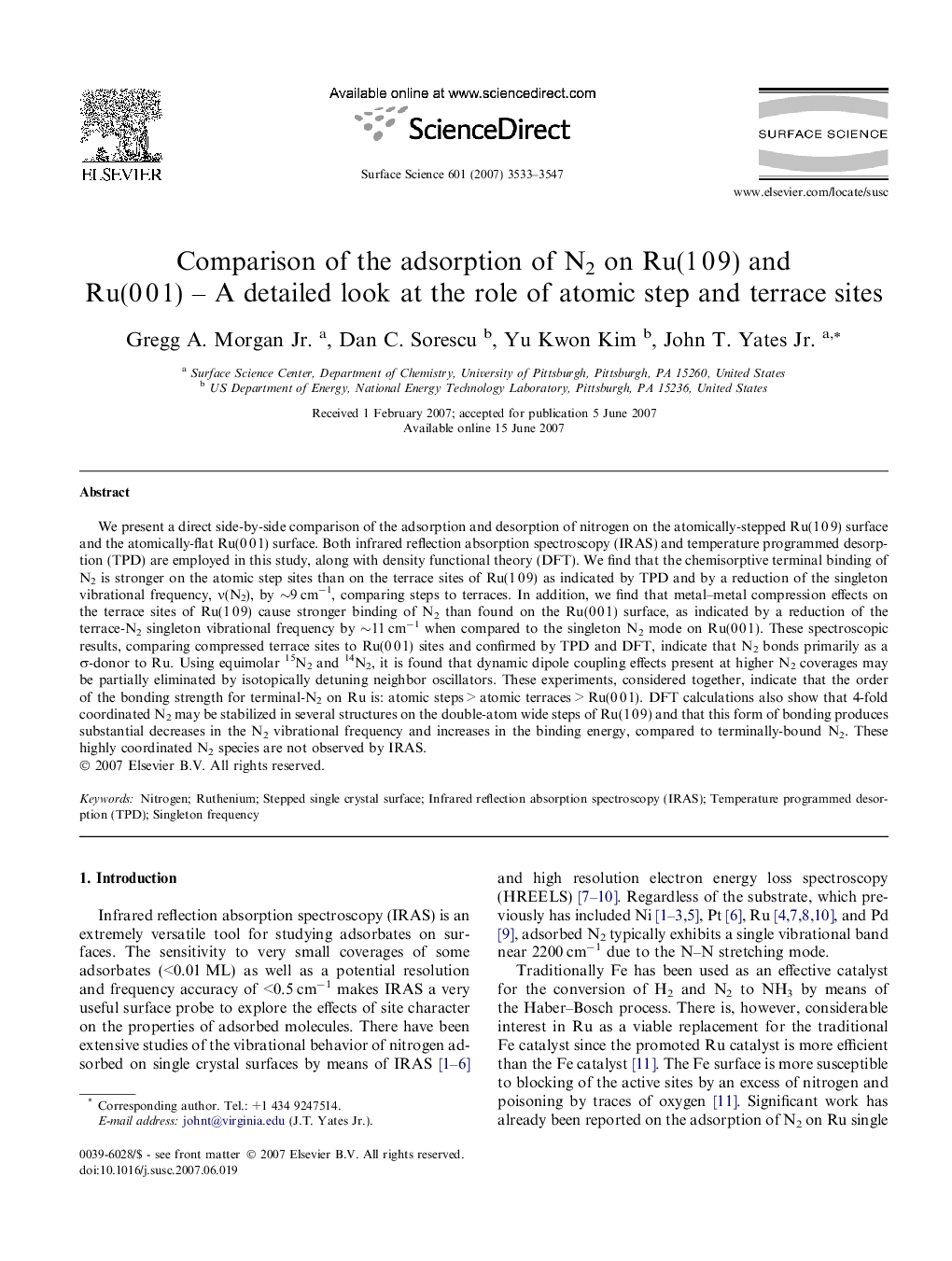| Article ID | Journal | Published Year | Pages | File Type |
|---|---|---|---|---|
| 5425720 | Surface Science | 2007 | 15 Pages |
Abstract
We present a direct side-by-side comparison of the adsorption and desorption of nitrogen on the atomically-stepped Ru(1 0 9) surface and the atomically-flat Ru(0 0 1) surface. Both infrared reflection absorption spectroscopy (IRAS) and temperature programmed desorption (TPD) are employed in this study, along with density functional theory (DFT). We find that the chemisorptive terminal binding of N2 is stronger on the atomic step sites than on the terrace sites of Ru(1 0 9) as indicated by TPD and by a reduction of the singleton vibrational frequency, ν(N2), by â¼9 cmâ1, comparing steps to terraces. In addition, we find that metal-metal compression effects on the terrace sites of Ru(1 0 9) cause stronger binding of N2 than found on the Ru(0 0 1) surface, as indicated by a reduction of the terrace-N2 singleton vibrational frequency by â¼11 cmâ1 when compared to the singleton N2 mode on Ru(0 0 1). These spectroscopic results, comparing compressed terrace sites to Ru(0 0 1) sites and confirmed by TPD and DFT, indicate that N2 bonds primarily as a Ï-donor to Ru. Using equimolar 15N2 and 14N2, it is found that dynamic dipole coupling effects present at higher N2 coverages may be partially eliminated by isotopically detuning neighbor oscillators. These experiments, considered together, indicate that the order of the bonding strength for terminal-N2 on Ru is: atomic steps > atomic terraces > Ru(0 0 1). DFT calculations also show that 4-fold coordinated N2 may be stabilized in several structures on the double-atom wide steps of Ru(1 0 9) and that this form of bonding produces substantial decreases in the N2 vibrational frequency and increases in the binding energy, compared to terminally-bound N2. These highly coordinated N2 species are not observed by IRAS.
Keywords
Related Topics
Physical Sciences and Engineering
Chemistry
Physical and Theoretical Chemistry
Authors
Gregg A. Jr., Dan C. Sorescu, Yu Kwon Kim, John T. Jr.,
